
Quernstones

Quernstones are pairs of stone tools which were used for hand grinding variety of materials. Grain was poured into the hopper at the top, the lower stone was the held stationary and is actually the part known as the quernstone, the upper section which was moved against it, is referred to as the handstone
What were they used for?
Quernstones have been used extensively throughout the world to grind materials, the most important of which was usually grain to make flour for bread making. They were generally replaced by Millstones once mechanised forms of milling appeared but were used in Britain from the Bronze age period through the Iron age and at least into Romano British times. Unfortunately there is not usually any organic residue which can be tested as this is worn away and the fatty deposits left by seeds and grains are rarely well preserved.
Were there different types?
The saddle quern seems to have been the most ancient and widely used an would possibly have involved pushing and pulling either a roughly cylindrical handstone (not unlike a rolling pin) backwards and forwards with both hands, or using a rough hemispherical shaped stone with one hand.
The rotary quern on the other hand, used a more circular motion, either back and forth or around in a full circle. The upper stone was rotated by means of wooden handles and this may have been either a one person or two person activity
Five excavated stones have been identified as possible broken fragments of either handstones or quernstones:
The most notable of these is an upper or handstone with a beehive type form. The shape can sometimes be used to give indications of the period when the stones were used, although broken stones are notoriously difficult to date, therefore the archaeological context in which they are found is equally important. This one was found in Trench 18 by the Old Vicarage gate in 2003 ( 2003 OVM T18 [303] (315) and formed from an irregular boulder, more oval than round, of coarse Millstone Grit. The fill from this context came in from outside the enclosure and seems to fit with a suggested date of the Romano British period. It has unfortunately been damaged at some point and the missing section, which presumably held the handle has been lost.
The 3D
Animation to the right has been kindly produced for us by David Wilcox of Virneth Studios Click on the grind button to play the animation and grind the grain.
( Please enable "Allow Blocked Content" )

The other four are possibly examples of the lower or basestones which would be only roughly dressed as they were intended to be set in the ground
How and where were they made
Millstone grit is often a material of choice as the edges stay sharp as the stones wear against each other and erode. Unfortunately, it is very difficult to say where the Millstone Grit would have come from as it varies so much between seams even within the same quarry.
The basestone was often flat and was intended to be set in the ground. The upper surface of this may be horizontal or inclined (which may be the case when the two parts have been produced by fracturing and splitting a single stone) An inclined surface might also mean that the ground material would come out at the bottom end and would therefore have been easier to collect, either in a clay or cloth lined area to make the grain easy to collect.
The grain would first be crushed in the centre by the weight of the upperstone then worked towards the edges, where it was ground more finely by the pick dressed outer surface .A wooden plug with a metal spike would be used to hold the tope stone in position against the bottom stone and the hopper at the top may actually have had a raised collar to enable it to hold more grain.
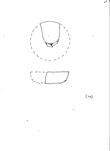 |
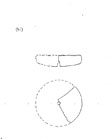 |
 |
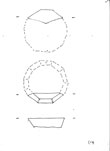 |
�
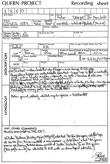 |
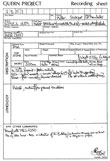 |
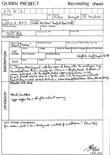 |
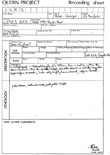 |
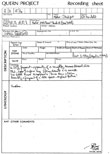 |
In April 2008 we were fortunate to be visited by a local expert on quernstones, John Cruse, of the Prehistory Research section of the Yorkshire Archeological Society who kindly visited to examine our stones. Read the full copy of his report
Click on the grind button above to play the animation and see how a beehive quern would have been used to mill grain
(Animation kindly produced for us by David Wilcox of Virneth Studios)
